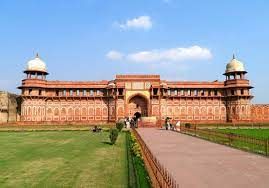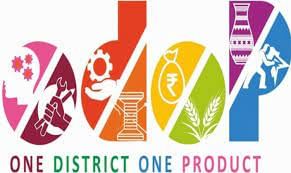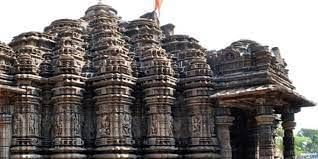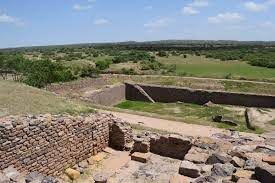UPSC Daily Current Affairs- 4th February 2023 | Current Affairs & Hindu Analysis: Daily, Weekly & Monthly PDF Download
GS-I
Agra Fort

Context
The Delhi High Court recently sought the Archaeological Survey of India’s (ASI) response in a plea moved by two registered trusts against the ASI’s communication rejecting permission to organize a cultural programme at the Agra Fort celebrating the birth anniversary of Chhatrapati Shivaji Maharaj.
About Agra Fort:
- It is a large 16th-century fortress of red sandstone located on the Yamuna River in the historic city of Agra, west-central Uttar Pradesh.
- It is about 5 km northwest of its more famous sister monument, the Taj Mahal.
- It was built under the commission of Emperor Akbar in 1565.
- It was only during the reign of Akbar’s grandson, Shah Jahan, that the site took on its current state.
- It was the main residence of the emperors of the Mughal Dynasty till 1638, when the capital was shifted from Agra to Delhi.
- Features:
- The fort is crescent-shaped, with a long, nearly straight wall facing the Yamuna river on the east side.
- The fort houses a maze of buildings, including vast underground sections.
- The outer wall is surrounded by a wide and deep moat on three sides.
- The Agra Fort has four main gateways- the Khizri Gate, Amar Singh Gate, Delhi Gate and Ghazni Gate.
- The fort complex was designated a UNESCO World Heritage site in 1983.
Source: The Hindu
Dholavira
Context
The Ministry of Tourism recently stated that the first G20 Tourism Working Group meeting will be held in Gujarat’s Rann of Kutch and the delegates of Rann of Kutch meeting will be taken to Dholavira which is a UNESCO world heritage site.
About Dholavira:
- Dholavira is an archaeological site of immense importance associated with the Indus Valley Civilization.
- It represents the ruins of an ancient city of the Harappan civilization that was inhabited over a period of 1,200 years from 3000 BCE through 1800 BCE.
- Location: The site is located near the village of Dholavira, in the Kutch District of the Indian state of Gujarat.
- Dholavira is the fifth largest site of the Indus Valley Civilization in the sub-continent.
- It lies between two seasonal streams, the Mansar in the north and Manhar in the south.
- It was declared a UNESCO World Heritage Sitein 2021.
- Features:
- It comprises of two parts: a walled city and a cemetery to the west of the city.
- The walled city consists of a fortified Castle with attached fortified Bailey and Ceremonial Ground, and a fortified Middle Town and a Lower Town.
- The archaeological remains of the city of Dholavira include fortifications, gateways, water reservoirs, ceremonial ground, residential units, workshop areas, and cemetery complex, all clearly representing the Harappan culture and its various manifestations.
- A series of reservoirs are found to the east and south of the Citadel.
- The water system of Dholavira was very well planned with 16 reservoirs and water channels that stored water or diverted water from nearby rivulets.
- Step wells leading to large public baths have also been discovered here.
Where is Rann of Kutch?
- It is a salt marshy land in the Thar Desert in the Kachchh district of western Gujarat.
- It lies between Gujarat in India and the Sindh province in Pakistan.
- The Rann of Kachchh is famous for its white salty desert sand and is reputed to be the largest salt desert in the world.
Source: Indian Express
GS-II
Joint Parliamentary Committee
The Opposition joined hands to demand a probe either by a Joint Parliamentary Committee (JPC), headed by the Supreme Court or monitored by the Chief Justice of India, into the allegations of fraud and stock manipulation against the Adani Group.
About Joint Parliamentary Committee:
- A Joint Parliamentary Committee (JPC) is set up by the Parliament for a special purpose, like for the detailed scrutiny of a subject or Bill.
- It has members from both the Houses and from both the ruling parties and the opposition.
- Members of the JPC are decided by the Parliament.
- There is no fixed number of members in the committee.
- It is dissolved after its term ends or its task has been completed.
- The recommendations made by the committee are in recommendatory in nature not binding on the government.
Powers of the committee:
- A JPC can obtain evidence of experts, public bodies, associations, individuals or interested parties suo motu or on requests made by them.
- If a witness fails to appear before a JPC in response to summons, his conduct constitutes a contempt of the House.
- Ministers are not generally called by the committees to give evidence.
- However, with the permission of the Speaker, the JPC can seek information on certain points from ministers and call the ministers.
- The JPC can take oral and written evidence or call for documents in connection with a matter under its consideration.
The Joint Parliamentary Committees are formed till date include the following cases:
- Bofors scandal (1987)
- Harshad Mehta Stock market scam (1992)
- Ketan Parekh share market scam (2001)
- Soft drink pesticide issue (2003)
- 2G spectrum case (2011)
- VVIP Chopper scam (2013)
- Land Acquisition (2015)
- NRC (2016)
- Personal Data Protection Bill (2019)
Source: Indian Express
One District One Product(ODOP)

Context
One District One Product Scheme is an initiative that is seen as a transformational step forward towards realizing the true potential of a district, fuel economic growth, and generate employment and rural entrepreneurship, taking us to the goal of AtmaNirbhar Bharat.
- This scheme is basically a Japanese business development concept, which gained prominence in 1979.
- It is aimed at promoting a competitive and staple product from a specific area to push sales and improve the standard of living of the local population.
- Over time, it has been replicated in other Asian countries as well.
- In India, Uttar Pradesh government was the first state of India to launch the concept of One District One Product in 2018.
Components of the Scheme:
- Identify one product per district based on the potential and strength of a district and national priorities
- Develop a cluster for that product in the district which is capable of producing a world-class product with quality, scalability, and a brand
- Provide market linkages
- Address bottlenecks for exporting these products
- Support local exporters/manufacturers to scale up manufacturing
- Find potential buyers outside India with the aim of promoting exports
- Promoting manufacturing & services industry in the District
- Generate employment in the District
GIS One District One Product (ODOP) Digital Map of India:
- By The Ministry of Food Processing
- The digital ODOP map provides detailed information about ODOP products to all states and facilitates the stakeholders.
- The digital map also has indicators for tribal, SC, ST, and aspirational districts.
- It will enable stakeholders to make concerted efforts for its value chain development.
Few products identified include:
Uttar Pardesh
- The ancient and nutritious ‘Kala namak’ rice of Siddharthanagar
- The rare technique of wheat-stalk craft, handicraft in Bahraich
- The famous chikankari and zari-zardozi work garments
- Banana fibre of Kushinagar,
- Banana of Kaushambi,
- Jaggery of Ayodhya,
- Aamla of Pratapgarh,
- Pulses of Balrampur and Gonda,
- Desi ghee of Auraiya,
- Wooden toys of Chitrakoot
- Wooden artifacts of Saharanpur, Basti, Bijnor, Rae Bareli
- The horn and bone work that uses the remains of dead animals rather than living ones, making it a nature-friendly replacement for ivory.
- Sunahri Kand: To support the production of horticultural items under the “One District One Product (ODOP)” scheme and provide better nutrition to school children
Rajasthan: Blue Pottery (Jaipur) and MarkhanaMarbels (Nagaur)
Maharashtra: Wine from the Nashik valley
Karnataka:
- The hilly district in Malnad region of Karnataka is known for its coffee production and accounts for 30-40% of the total coffee production in India. It is also nicknamed the ‘coffee cup’ of India.
- In Chikkamagaluru, spices were earmarked, while pineapples were chosen in Shivamogga district.
- Other products included are Kalaburagi (red gram), Mandya (jaggery), Vijayapura (lemon), Haveri (mango), Gadag (Byadagi chillies), Bidar (ginger), Ballari (fig), Mysuru (bananas), and Koppal (guava).
News Source: PIB
What is the Paris Club?

Context
The Paris Club, an informal group of creditor nations, will provide financial assurances to the International Monetary Fund on Sri Lanka’s debt.
The Paris Club
- It is a group of mostly western creditor countries that grew from a 1956 meeting in which Argentina agreed to meet its public creditors in Paris.
- Objective is to find sustainable debt-relief solutions for countries that are unable to repay their bilateral loans.
- It describes itself as a forum where official creditors meet to solve payment difficulties faced by debtor countries. All 22 are members of the group called Organisation for Economic Co-operation and Development (OECD).
- The members are: Australia, Australia, Belgium, Canada, Denmark, Finland, France, Germany, Ireland, Israel, Japan, Netherlands, Norway, Russia, South Korea, Spain, Sweden, Switzerland, the United Kingdom and the United States.
How has Paris Club been involved in debt agreements?
- Since its beginnings, the Paris Club has reached 478 agreements with 102 different debtor countries.
- Since 1956, the debt treated in the framework of Paris Club agreements amounts to $ 614 billion.
- It operates on the principles of consensus and solidarity. Any agreement reached with the debtor country will apply equally to all its Paris Club creditors.
- A debtor country that signs an agreement with its Paris Club creditors, should not then accept from its non-Paris Club commercial and bilateral creditors such terms of treatment of its debt that are less favourable to the debtor than those agreed with the Paris Club.
The role of the Paris Club over time: The Paris group countries dominated bilateral lending in the last century, but their importance has receded over the last two decades or so with the emergence of China as the world’s biggest bilateral lender.
Source: Indian Express
GS-III
Project ELLORA

Context
Research
Joint Parliamentary Committee
ers at the Microsoft Research (MSR) lab in India have been working towards creating Project ELLORA.
About Project ELLORA:
- The project aims to bring ‘rare’ Indian languages online.
- It is also known as Enabling Low Resource Languages that was launched in 2015.
- It is a digital resource for Indian languages that do not have enough presence online.
- Some of the languages that’s its researching includes: Gondi, Mundari, and Idu Mishmi.
Gondi:
- It is a South-Central Dravidian language spoken by Gond tribes.
- It is spoken in Madhya Pradesh, Maharashtra, Chhattisgarh, Andhra Pradesh and Telangana.
- It is written in Devanagari and Telugu scripts.
Mundari:
- It belongs to Austroasiatic language family spoken by the Munda tribes.
- It is spoken in Jharkhand, Odisha and West Bengal.
- Scripts: Mundari bani.
- It is written in the Devanagari, Odia, Bengali, and Latin writing systems.
Idu Mishmi:
- It is spoken in Arunachal Pradesh and in Tibet Autonomous Region, China.
- It uses the Tibetan script and Idu Azobra script.
- It is also known as Sulikata, Midu, Mindri and Mithu.
Source: Indian Express
S&P Dow Jones Indices

Context
Recently S&P Dow Jones Indices announced that it would remove Adani Enterprises, the flagship company of the Adani Group, from its widely used sustainability indices.
About S&P Dow Jones Indices
- The index comprises global sustainability leaders as identified by S&P Global through its Corporate Sustainability Assessment (CSA).
- It represents the top 10% of the largest 2,500 companies in the S&P Global Broad Market Index (BMI) based on long-term economic, environmental and social criteria.
What is the Corporate Sustainability Assessment?
- It was founded in 1999 and serves as the foundation for the S&P Dow Jones Sustainability Index.
- It is now also the basis for many other Environment, Social responsibility, and (Corporate) Governance
- According to S&P Global, S&P acquired the CSA in 2019, which included the transition of the related ESG ratings and ESG benchmarking teams that now operate out of S&P Global Switzerland.
- It compares companies across 61 industries via questionnaires assessing a mix of 80-100 cross-industry and industry-specific questions.
- Based on their performance, companies receive scores ranging from 0 to 100.
- The percentile rankings for approximately 20 financially relevant sustainability criteria across economic, environmental and social dimensions.
- A growing number of companies participate in the assessment and use their results to benchmark their
What is Environment, Social responsibility, and (Corporate) Governance (ESG)?
- ESG is a framework that helps stakeholders understand how an organization is managing risks and opportunities related to environmental, social and governance criteria
- Over the last few years emerged as key themes for investors everywhere, including in India.
- The asset size of ESG funds — which incorporate environmental, social responsibility and corporate governance in their investing process — has ballooned in India,
- In 2021, the NSE launched NSE Prime, a framework that allows companies to submit to standards of corporate governance that are higher than those required by existing regulations.
Source: Indian Express
Orang National Park
Context
Recently, a Royal Bengal tiger was found dead in Assam's Orang National Park due to age-related problems.
About Orang National Park:
- It is located on the north bank of the Brahmaputra River in the state of Assam.
- It was established as a sanctuary in 1985 and declared a National Park on 13 April 1999.
- It is also known as the mini Kaziranga National Park (IUCN site) since the two parks have a similar landscape made up of marshes, streams and grasslands and are inhabited by the Great Indian One-Horned Rhinoceros.
- It is also a Tiger Reserve of the country which was notified in 2016.
- Fauna: Rhinoceros, Tiger, Elephants, Hog Deer, Wild Pig, Civet Cat, One-Horned Rhinoceros.
Source: The Hindu
|
63 videos|5408 docs|1146 tests
|
FAQs on UPSC Daily Current Affairs- 4th February 2023 - Current Affairs & Hindu Analysis: Daily, Weekly & Monthly
| 1. What are the three main subjects covered in the UPSC examination? |  |
| 2. What is the significance of General Studies Paper-I in the UPSC examination? |  |
| 3. What is the role of General Studies Paper-II in the UPSC examination? |  |
| 4. What subjects are covered in General Studies Paper-III of the UPSC examination? |  |
| 5. How can candidates prepare for the General Studies papers in the UPSC examination? |  |



















